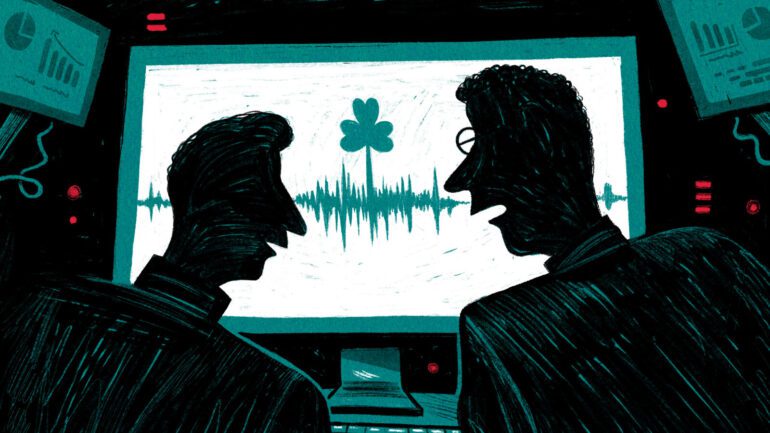TL;DR:
- Data scientists Georgi Tinchev and Marius Cotescu successfully create an authentic Irish accent for Amazon’s Alexa using AI-powered text-to-speech systems.
- AI technology has rapidly advanced, enabling synthesized voices to sound remarkably human-like.
- Voice disentanglement, a technique championed by Amazon scientists, helps replicate regional dialects and accents for greater diversity and inclusion.
- Training Alexa to speak Irish English involved leveraging AI to mimic regional dialects and modify specific sounds, such as emphasizing “r” sounds.
- The breakthrough highlights the transformative power of AI in shaping voice synthesis and paves the way for future advancements in voice-enabled technologies.
Main AI News:
In a recent feature by The New York Times, two brilliant data scientists shed light on their groundbreaking achievement: developing an authentic Irish accent for Amazon’s renowned voice assistant, Alexa. Through the power of artificial intelligence (AI) and text-to-speech systems, Georgi Tinchev and Marius Cotescu have revolutionized the way voice patterns and accents are created, forever changing the landscape of digital speech synthesis.
The surge of AI technology in the past year has propelled the advancement of synthesized voices, rendering them eerily close to human-like qualities. This remarkable progress has led to a diverse range of applications in research, commercial ventures, and personal endeavors. From narrating audiobooks to perpetrating scams and crafting compelling voiceovers for advertisements, AI audio has captivated online users worldwide.
Crafting an authentic Irish brogue posed a formidable challenge for Tinchev and Cotescu, who described it as “a hard one” to master. Leveraging a technique known as voice disentanglement, they meticulously pinpointed various aspects of speech, such as tone and intonation. This technique, championed by Amazon scientists, not only fosters diversity and inclusivity in voice assistants but also enables the replication of regional dialects and accents across multiple languages.
The endeavor of creating an Alexa that speaks Irish English, unveiled in November, required extensive language training. However, the integration of AI drastically expedited the process, thanks to its ability to mimic distinct accents and dialects. To achieve this feat, the data scientists employed an existing Alexa model that spoke in a British accent as a baseline. They then trained it using text-to-speech models and voice recordings of Irish accents, meticulously disentangling and identifying the unique elements that constitute the Irish accent.
Throughout the training, the data scientists made strategic modifications to certain sounds, accentuating the unmistakable “r” sounds that resonate in the Irish vernacular. This meticulous attention to detail culminated in the birth of a remarkable voice, accompanied by the release of Irish Alexa.
Tinchev and Cotescu’s groundbreaking work exemplifies the transformative power of AI in shaping the realm of voice synthesis. Their tireless efforts have not only brought the enchanting Irish charm to Amazon’s Alexa but have also paved the way for advancements in voice technology, revolutionizing the way we interact with digital assistants. As AI continues to evolve, the possibilities for further linguistic exploration and cultural representation are limitless, offering an exciting glimpse into the future of voice-enabled technologies.
Conclusion:
The successful development of an authentic Irish accent for Amazon’s Alexa showcases the remarkable progress made in voice synthesis through AI technology. This achievement not only brings diversity and inclusion to voice assistants but also opens up new possibilities for cultural representation. The market implications are significant, as businesses can now leverage AI-powered voice synthesis to cater to specific regional accents and dialects, enhancing user experience and engagement. Furthermore, this breakthrough highlights the growing potential of AI in revolutionizing voice-enabled technologies, indicating a promising future for the market.

